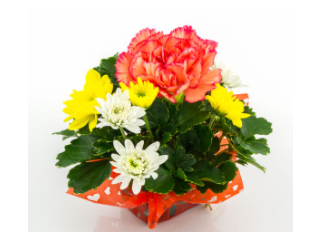Clad Steel Plate Aziendale
2 years ago Industriale Bari 302 Visto Reference: 135Location: Bari
Prezzo: Contattaci
Clad Steel Plate is a composite steel plate made by bonding stainless steel, etc. (cladding material) to either or both sides of carbon steel or low-alloy steel (base metal). Clad steel plate combines the necessary strength of a structural material (base metal) with the resistance to heat and corrosion (cladding material). Moreover, it offers substantial economic benefit, because it costs substantially less than a plate made entirely of the cladding material.
Gilding Metal Clad Steel Strips refer to the copper alloy, comprising 95% copper and 5% zinc. Technically, it is brass. Gilding metal is used for various purposes, including the jackets of bullets, driving bands on some artillery shells, as well as enameled badges and other jewelry. It is a special kind of brass, with a high percentage of copper, used to make objects which are to be gilded by electrolysis.
Like bullets, Cups for Military can be identified as having been fired by a specific firearm. The time when cartridges are loaded into a firearm the potential for the transfer of unique tool marks exists. However, the cartridge does not have to be fired for these marks to be transferred. Simply loading a cartridge into a firearm can generate a unique identification mark that can be easily identified.
Cartridge Case Cups are mostly made of brass but can also be made of other materials such as steel and plastic. Cartridge cases come in a variety of finishes but the material used in cartridges is usually softer than that of a firearm. The surface of the cartridge case that meets the inner workings of the firearm may be marked.
Tool marks produced on the cartridge cases will be in two basic forms. As the microscopic striations found on bullets, cartridge cases can pick up striated action marks. These "scratches" are produced when the cartridge case moves laterally against the tool producing a scrape or striated mark. The other forms of marks that can be left on a cartridge case are impressed with action marks. Impressed marks are created on cartridge cases when it impacts the tool (again, the firearm) with adequate velocity or pressure to leave an impressed or indented mark.
Cartridge Bullet Cups are compared to fired standards from a firearm using a comparison microscope as described on the bullet identification page. Standards are first examined to determine what marks, if any, the firearm is consistently reproducing. Evidence cartridge cases are then directly compared to the standards to see if they too are also similarly marked. In the case of Gunwantlal v. State of M.P it was held that “ From the perusal of the record it can be safely inferred that the presence of a live cartridge in the handbag was not within the knowledge of the petitioner and petitioner did not have requisite mens rea for committing the said offence.”
Meaning and Components of Cartridge
A cartridge or around is a type of pre-assembled firearm ammunition packaging a projectile. a propellant substance and an ignition device within a metallic, paper or plastic case that is precisely made to fit within the barrel chamber of a breech-loading gun, for the practical purpose of convenient transportation and handling during shooting. Although in popular usage the term "bullet" is often used to refer to a complete cartridge, it is correctly used only to refer to the projectile.
There are several different words used to describe ammunition: bullets, shells, projectiles, rounds, shot, slugs, cartridges, munitions, etc. In reality, anything can be used as ammunition, whether it be a stone you are throwing or words you are using in an argument. In the world of firearms, it is most commonly referred to in the informal context as “ammo.” Many people call them bullets, which to some is like nails on a chalkboard because the correct term for firearms ammunition is “cartridge.”
Copper Clad Steel (CCS), also known as copper-covered steel or the trademarked name Copperweld is a bi-metallic product, mainly used in the wire industry that combines the high mechanical resistance of steel with the conductivity and corrosion resistance of copper. It is mainly used for grounding purposes, line tracing to locate underground utilities, drop wire of telephone cables, and inner conductor of coaxial cables, including thin hookup cables like RG-174 and CATV cable. It is also used in some antennas for RF conducting wires.
The first recorded attempt to make copper clad steel wire took place in the early 1860s. Although for over 100 years people had been suggesting various ways of uniting copper and steel, it was not until the period mentioned that Farmer and Milliken tried wrapping a strip of copper about a steel wire. American engineers in 1883 and again in the 1890s made attempts to produce a copper-steel wire, in one instance at least, by electroplating copper on steel.














